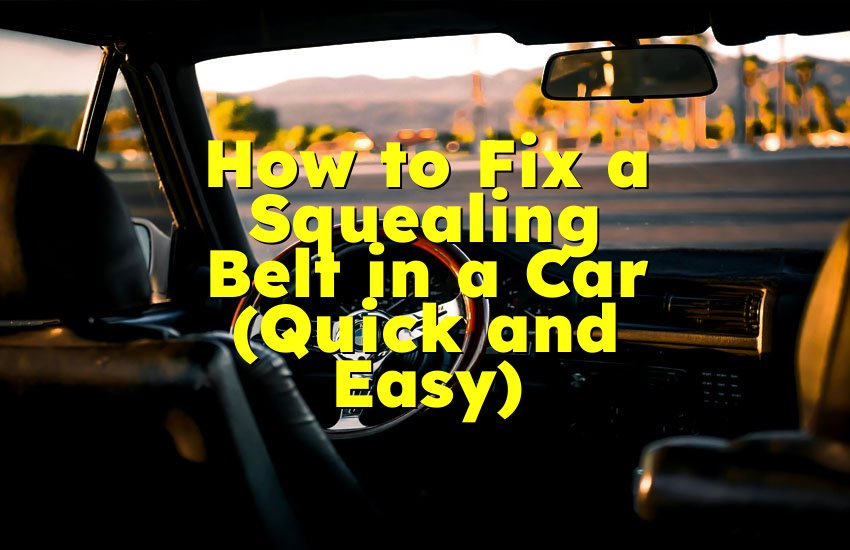As an Amazon Associate, I earn from qualifying purchases at no extra cost to you.
How to Clean Inside of Windshield Like a Pro: Expert Tips
Have you ever been driving toward the sun and suddenly realized your windshield is covered in a foggy, greasy film? Yeah, it’s the worst. No matter how clean your car is on the outside, that hazy mess inside your windshield can ruin the whole vibe — and even become a safety issue. Cleaning the inside of a windshield might sound easy, but if you’ve ever tried and ended up with streaks everywhere, you know it's not always as simple as it seems. But don't worry, I've got you.
Why is the Inside of Your Windshield Always So Dirty?
Understanding the Source of the Film
You might think your windshield gets dirty just from the outside elements like rain, bugs, and road grime. But the inside? That cloudy build-up mostly comes from something called off-gassing. This is when plastic and vinyl surfaces in your car slowly release chemicals into the air, especially in heat. These chemicals settle on the inside of your windshield as a greasy film. Gross, right?
Besides off-gassing, there are other contributors too. If you're a smoker, smoke particles love to stick to glass. If you use oily dashboard cleaners, some of that residue can travel through the air and land on your windshield. Even the air coming through your car's vents carries dust that settles on the glass. Over time, all of this builds up and turns into a cloudy, sticky mess that makes driving hard, especially at night or during sunrise and sunset.
Visibility and Safety Risks
That haze on your windshield is more than just an eyesore. It can create serious visibility issues. When light hits the greasy film — especially direct sunlight or headlights from oncoming cars — it can create a glare that makes it hard to see clearly. That glare might seem harmless at first, but during quick decisions in traffic, it can become dangerous.
Keeping the inside of your windshield clean is an important part of safe driving. It's one of those small things that makes a big difference. You don't realize how much clearer your view can be until you give that glass a proper clean.
Common Mistakes That Make Things Worse
A lot of people try to clean their windshield with a regular paper towel and some household glass cleaner. That might work on your bathroom mirror, but car glass is different. Paper towels can leave lint, and most household cleaners contain ammonia, which can damage window tint and leave streaks behind.
Another common mistake is cleaning the windshield while it’s hot. If your car has been sitting in the sun, the heat will cause cleaners to evaporate too quickly, leaving spots and streaks that are hard to remove. The result? You end up doing double the work.
To clean the inside of your windshield right, you need the proper approach — not just the right tools, but also the right method and timing.
Best Tools and Products to Use for Cleaning Inside Windshield
The Must-Have Supplies
Before you start scrubbing, let's talk tools. The right supplies can make all the difference in how effective (and easy) your cleaning session will be. Here's what you'll want to have on hand:
- Microfiber towels (preferably waffle weave)
- A high-quality glass cleaner (ammonia-free)
- Distilled water (if you want to DIY a cleaner)
- Rubbing alcohol (isopropyl alcohol)
- A reach-and-clean tool (for those tight corners)
- A spray bottle (if mixing your own solution)
Microfiber towels are your best friend here. Unlike paper towels or old rags, microfiber doesn't leave behind lint or streaks. Waffle weave designs are especially effective for grabbing dirt and grime.
Choosing the Right Cleaner
Not all glass cleaners are created equal. You want something that is specifically labeled as ammonia-free. Ammonia not only smells bad, but it can also damage your car’s interior and your tint if you have any.
Some people like to make their own cleaner by mixing:
- 1 cup distilled water
- 1 cup isopropyl alcohol
- 1 tablespoon white vinegar
This DIY cleaner is cheap, safe, and effective. The alcohol cuts through grease, while the vinegar helps break down residue and adds a streak-free finish. If you prefer store-bought options, brands like Invisible Glass are often praised for their performance on car windows.
Tools That Help With Hard-to-Reach Spots
If you’ve ever tried to clean the bottom corner of your windshield where it meets the dashboard, you know how awkward it is. That's where a windshield cleaning tool comes in. These are long-handled gadgets with a pivoting head covered in microfiber. They let you clean tight spots without twisting your arm into weird positions.
A pro tip? Wrap your microfiber towel around the head of the tool and spritz the cleaner directly on the towel — not the glass. This prevents overspray from hitting your dash or electronics.
Preparing the Space
Before you start spraying anything, clean off your dashboard and remove dust. This prevents particles from floating up and sticking to the glass while you’re working. Also, roll down the windows a bit or keep the doors open to let fresh air circulate, especially if you’re using alcohol or vinegar-based products.
Park your car in a shaded area or garage. If it’s sunny and hot, the cleaner will evaporate too fast and leave streaks. Shade gives you more time to wipe things down properly.
Step-by-Step Method to Clean Inside of Windshield Without Streaks
Step 1: Dry Wipe First
Start with a dry microfiber towel. Wipe the entire inside of the windshield using circular motions. This removes loose dust, dirt, and lint. It might not seem like a big step, but it helps your cleaner work better by focusing on just the film and grime, not the loose debris.
Pay attention to the edges and corners. A lot of grime tends to build up there over time. A few extra seconds of dry wiping can save you time later.
Step 2: Apply the Cleaner
Next, grab a clean microfiber towel and lightly spray your cleaner onto it. Avoid spraying directly on the glass, since it can drip and create a mess on your dashboard or get into your vents.
Wipe the windshield in overlapping horizontal strokes, starting from the passenger side and working your way across. This helps you keep track of where you’ve already cleaned and avoid missing spots. Flip the towel over to a clean side as it gets dirty.
If the film is really stubborn, you can mix in a little isopropyl alcohol with your cleaner or use a second towel with just alcohol. This will cut through the oily layer much faster.
Step 3: Buff for a Streak-Free Finish
Once you’ve cleaned the glass, take a fresh, dry microfiber towel and buff the surface. Use circular motions and light pressure. This step removes any leftover streaks or haze and gives the glass that sparkling, clean finish.
You might have to buff a second time if your cleaner leaves any residue. Some people even keep a towel in the car to give it a quick buff now and then, especially in winter when windows fog up more easily.
Tips to Maintain That Clean Look
- Keep a microfiber cloth in your glove box for quick touch-ups.
- Avoid using oil-based dash protectants that can add film to the windshield.
- Crack your windows slightly on hot days to reduce off-gassing.
- Clean the inside of your windshield at least once a month or more if you drive a lot.
Once you clean it properly the first time, maintenance becomes a lot easier. You'll notice your windshield stays clearer, and you'll probably enjoy driving more with that crisp, unobstructed view.
Frequently Asked Questions (FAQs)
Is it safe to use vinegar on the inside of a car windshield?
Yes, using vinegar is generally safe and effective for cleaning the inside of your car's windshield. Vinegar is a natural cleaner that helps dissolve grease and grime without leaving residue. Just make sure to dilute it properly — usually one part white vinegar to one part distilled water works well. Avoid using vinegar full-strength since it can leave a strong smell and might affect rubber or plastic surfaces if it runs down the glass. Always apply the vinegar solution to a microfiber cloth instead of spraying it directly on the glass to keep it controlled and avoid drips.
Can I clean the inside windshield with water only?
While water alone won't harm your windshield, it's not very effective at cutting through the greasy film caused by off-gassing or smoke residue. You'll end up spreading the grime around more than removing it. If you're in a pinch, you can use distilled water to avoid water spots, but it's best to mix it with a bit of vinegar or alcohol for better cleaning power. Always use a clean microfiber towel, even with just water, to avoid streaks and lint. For routine touch-ups, water might be okay, but for a deep clean, you'll want a stronger solution.
Do I need to clean the inside of my windshield regularly?
Yes, regular cleaning is key. Most drivers clean the outside of their windshield often but forget the inside. Over time, dust, smoke, and plastic off-gassing leave a film that builds up and affects visibility. Cleaning the inside once a month, or more if you smoke or drive in dusty areas, helps prevent that hazy film from getting out of control. Regular cleaning also means each session takes less time and effort, since you're dealing with light build-up rather than a thick layer of grime.
Is it bad to use paper towels to clean car windows?
Paper towels are not the best choice for cleaning car windows. They tend to leave lint and tiny fibers behind, which can cause streaks and make your glass look even dirtier. Plus, if you scrub too hard, paper towels can break apart and leave little bits stuck to the windshield. Instead, use a microfiber cloth, which is specially designed to lift dirt and absorb moisture without scratching the glass. Microfiber also holds up much better over time, so you're not wasting paper with every cleaning.
Can I use Windex on my car's inside windshield?
You can use Windex if it's ammonia-free, but you should avoid the regular version that contains ammonia. Ammonia can damage your car's window tint and release strong fumes, especially in a confined space like a car. There are specific automotive glass cleaners on the market that are made without ammonia and are much safer for use inside your vehicle. If you're not sure what's in your glass cleaner, check the label or stick to trusted auto-specific brands. Better safe than sorry.
Do I need to wear gloves while cleaning inside my windshield?
Wearing gloves isn't required, but it can be helpful, especially if you're using a cleaner with alcohol or vinegar. These substances can dry out your skin after repeated use. Gloves also prevent oils from your hands from transferring to the glass, which could leave smudges. If you have sensitive skin or just want to stay clean, a simple pair of nitrile or latex gloves can make the process a lot more comfortable. It's all about personal preference.
Can fogging on the inside of the windshield be cleaned the same way?
Yes, the foggy residue caused by humidity or temperature changes can be cleaned using the same method. Start with a dry microfiber towel to remove moisture, then use a glass cleaner to take care of any film left behind. Fogging itself is usually temporary, but if there's a film building up that causes fog to stick more easily, a good cleaning can reduce that issue. Using an anti-fog spray after cleaning can also help prevent future fogging.
Is it necessary to use a reach tool for cleaning the windshield?
If you struggle to reach the bottom corners of your windshield, then yes, a reach tool can be super helpful. It saves your back and arms from awkward stretching and helps apply even pressure across the entire glass. These tools are designed to fit the curves of the windshield and often come with washable microfiber pads. You don't absolutely need one, but once you try it, you'll probably never go back to hand-only cleaning — especially if your car has a large, sloped windshield.
I hope this guide helped you finally get that inside windshield clean, clear, and streak-free — now your drives can be safer, easier, and just a little more satisfying.











